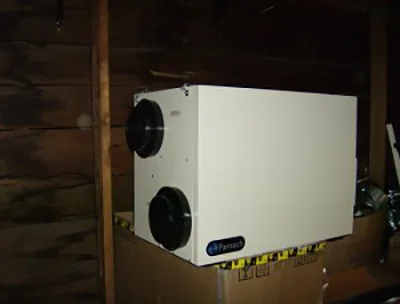Harnessing Heat Recovery Ventilation Systems to Mitigate Radon Exposure

Radon, a naturally occurring radioactive gas, poses a significant health risk when it accumulates indoors. Fortunately, modern advancements in ventilation technology offer a promising solution: Heat Recovery Ventilation (HRV) systems. Let's delve into how these innovative systems can effectively remove radon from indoor environments, safeguarding the health and well-being of occupants.
Understanding Radon:
Radon is a colorless, odorless gas that emanates from the ground and can seep into buildings through cracks in the foundation, gaps in construction materials, or through water sources. Prolonged exposure to elevated radon levels has been linked to lung cancer, making it a pressing concern for indoor air quality.
The Role of Heat Recovery Ventilation Systems:
Heat Recovery Ventilation Systems are designed to continuously exchange indoor and outdoor air while simultaneously recovering heat from the outgoing air to preheat incoming fresh air. This process not only ensures a constant supply of fresh air but also helps maintain indoor temperatures efficiently.
Radon Mitigation with HRV Systems:
HRV systems can effectively reduce radon levels indoors through controlled ventilation. By continuously circulating fresh outdoor air into the building and expelling stale indoor air, HRV systems help dilute radon concentrations, preventing its accumulation to dangerous levels.
How HRV Systems Work:
HRV systems utilize a heat exchanger core to transfer heat from outgoing stale air to incoming fresh air. As outdoor air enters the building, it passes through the heat exchanger, where it absorbs heat from the exhaust air. This preheated fresh air is then distributed throughout the building, while the stale air is expelled outside.
Ensuring Effective Radon Mitigation:
To maximize radon removal efficiency, it's essential to properly size and install HRV systems based on the specific characteristics of the building and the local radon levels. Additionally, regular maintenance and monitoring of the HRV system are crucial to ensuring optimal performance and continued radon mitigation.
The Benefits of HRV Systems:
Beyond radon mitigation, HRV systems offer numerous benefits, including improved indoor air quality, enhanced comfort, and energy efficiency. By promoting a constant supply of fresh air while minimizing heat loss, HRV systems contribute to a healthier and more comfortable indoor environment.
In conclusion, Heat Recovery Ventilation systems represent a proactive and effective approach to mitigating radon exposure in indoor environments. By harnessing the power of controlled ventilation and heat recovery, these systems play a crucial role in safeguarding the health and well-being of occupants, ensuring a safer and healthier living environment for all.
If you need a heat recovery ventilation system installed in your home, contact Radon Systems LLC.






